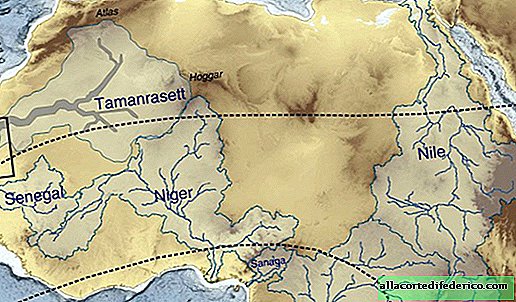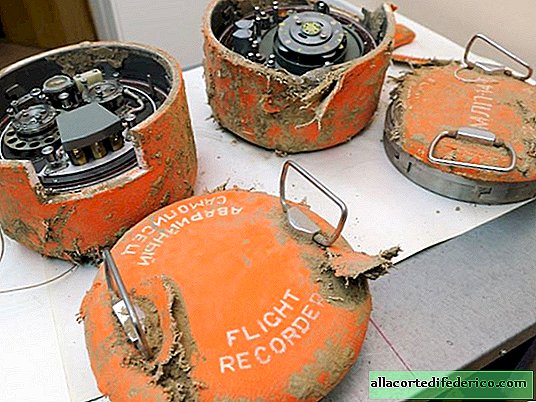Tamanrasset: a large river in the Sahara that existed only 5 thousand years ago
Even at the time of the first pharaohs of Egypt, most recently by historical standards, the Sahara looked different. The sands have already begun to expand, capturing the plains and highlands, but there still existed full-flowing rivers that have remained since the recent warm and humid past. So, for example, in the east of the Sahara a large tributary of the Nile River flowed into it from the left, but today there are only dried up valleys. And in the west of the desert there was a large full-flowing river Tamanrasset, which carried its waters to the Atlantic.

The PALSAR tool, which is used for radar observations, including from satellites, helped to find the remains of the ancient channel. The photographs clearly show the ancient river system, with numerous tributaries and a significant area of the basin. The approximate length of the river is estimated at 500 kilometers. According to researchers, the source of the river was in Algeria, on the natural elevations of the relief - the Akhaggar Highlands, and possibly even further north, at the foot of the Atlas Mountains.

Alas, as a result of climatic changes, the river first began to grind, and then finally dried up. Over time, the sands have absorbed the dried up channel, and today, for the most part of the once vast basin, there are no traces of the Tamanrasset River and its many tributaries.

Scientists believe that the remnants of the river system still existed about 2 thousand years ago, and the process of shallowing began about 5 thousand years ago. Around this time, the period ended, called the Neolithic subpluvial, which lasted several thousand years. It was characterized by an abundance of rainfall, which, combined with a warm tropical climate, led to the rapid flourishing of the Sahara. Of course, there were no humid evergreen forests here, but fertile savannas full of life were located on the site of the now lifeless Sahara.

At the same time, the heyday of several Neolithic cultures of this African region accounted for. Extensive grassy plains with diverse fauna stretched here, as well as many lakes and rivers, one of which was Tamanrasset.

Only in the lower reaches, not far from the place where the ancient river flows into the Atlantic Ocean, is it possible to observe a small watercourse that dries in the dry season. This river, located on the territory of modern Mauritania, is also called Tamanrasset, but only vaguely resembles its full-flowing predecessor.


















